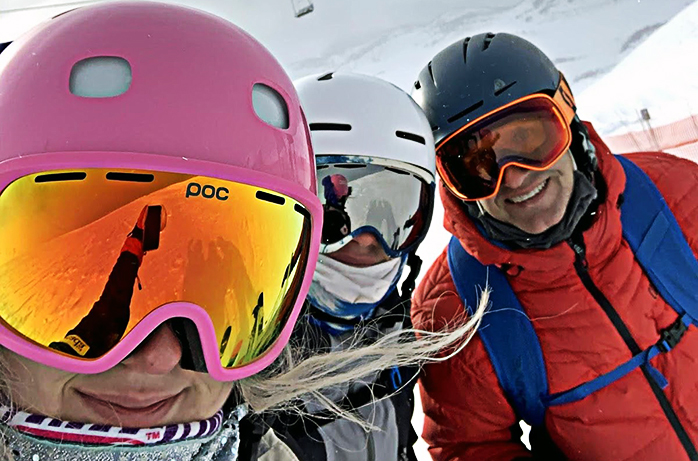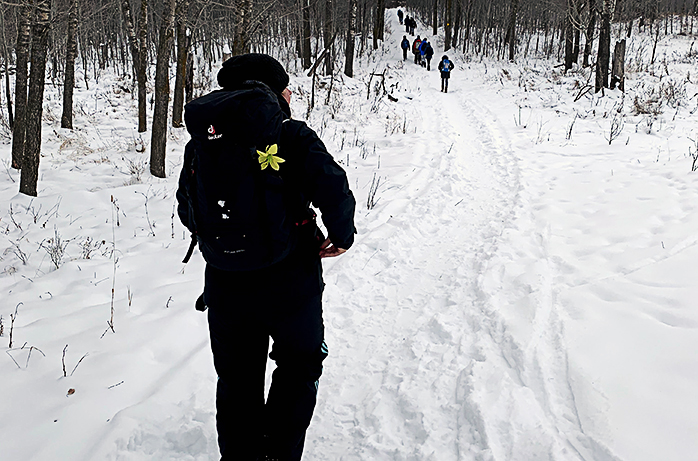
Vimy ODP – Exercising in the Outdoors During a Pandemic
Written by Vimy Outdoor Pursuits Teacher/Instructor Rob Schmidt.
With the lockdown of Gyms and Indoor Sports Facilities, there has been a renewed interest in exercising outdoors. We saw it in the summer with a vast number of people taking up sports like cycling and running. As well, there was an unprecedented amount of people heading into the backcountry to go hiking and climbing. Outdoor sporting goods equipment was at a premium this summer, which anyone who was looking to buy a new bike can attest to. This new found interest has continued into the winter months as well, with people taking up cross-country and alpine skiing like never before.
Exercising in the outdoors definitely has some health benefits. Many studies have shown that exercising outdoors forces your mind to focus on the changing terrain in a manner that is different from doing similar types of activities indoors. This increased engagement of the brain suggests that outdoor exercise benefits mental well-being more. Other studies have shown that being active outdoors also reduces perceived effort which allows individuals to work at higher workloads, which may also help increase the amount of physical activity that one is able to do. And possibly most importantly with what is going on in our world today, exercise outdoors has been found to reduce stress levels. A Japanese study discovered that “Forest Bathing”, spending short periods of time in a forest daily, can reduce cortisol levels. Cortisol is the chemical found in our bodies that causes stress. It is believed that by exercising outdoors, you can relieve your stress, lower your blood pressure, and prioritize your physical health.

Exercising outdoors, however, does come with some inherent risks. Sports like biking, running, hiking and cross country skiing can typically all be done while maintaining at least a 6-foot social distance, which is good news from a COVID standpoint. The risks come in the form of physical demands and safety. Health conditions like asthma, heart problems or Raynaud’s disease can be impacted by cold weather exercise. As well, exercise in cold temperatures can lead to frostbite or hypothermia. It is important during the winter months to dress in layers to help with your thermoregulation and to make sure that you not only check the temperature for the time you will be outside, but also to check the wind chill, precipitation and trail conditions for where you will be exercising. When exercising outdoors in cooler temperatures, your blood flow is going to be concentrated in your body’s core, leaving your head, hands and feet vulnerable to the cold. It is important to make sure that your extremities are protected by wearing gloves or mittens and a toque. As things can go wrong while exercising outdoors, it is also a good plan to make sure that you tell someone where you are going and when you plan to return, even if the activity is as simple as a run in the neighborhood. If you are looking for a more adventurous activity and plan on travelling into the backcountry, it is an extremely good idea to create a plan, check with provincial parks, national parks, avalanche canada or find local information on the conditions of the location of where you will be visiting. As well, it is imperative that you have the right equipment for the activity that you are pursuing. With an increase in the number of people in the backcountry in Alberta this past year, there was a significant rise in the number of search and rescue missions that occurred.
Regardless of what you choose to do for exercise outdoors, the main thing is to just go out and do it. You will reap the mental and physical benefits of being active outside and that is something we all could use right now.









